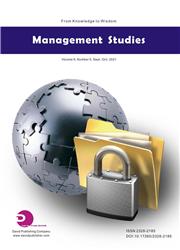The Dao of Mathematical Creativity, Symmetry Theories, and Yin-Yang Philosophy With Their Classroom Applications
引用次数: 0
Abstract
This paper introduces creativity, one of the significant features in maths. The creative mathematical beauty of symmetry and asymmetry are worth investigating in the practicing of Taichi . Symmetrical variances make the real world. Symmetry can be regarded as a kind of mirroring, like the line symmetry, the mirror image of the other parts, or rotational symmetry. Such characteristics can be vividly demonstrated in the traditional Chinese philosophical yin-yang theory ( YY ). The accompanying of male and female reveals the friendly cooperative relationship. YY reflects the counterparts of vacancy and firm, inhale and exhale, noun and verb, theory and practice, light and heavy, slow and fast, the pace, the sound effect in the classroom. Such an analysis is undergone about yin and yang in Yi School and Dao De Ching ( DDC ). Furthermore, there are detailed arguments of the symmetric nature of every verse of DDC , revealing the cultural value of the language. Their applications in the class admit the recognition under the new liberal arts project by China’s Ministry of Education. Yet, the integration of research and teaching is required to go数学创新之道、对称理论、阴阳哲学及其课堂应用
本文介绍了数学的一个重要特点——创造性。对称性与非对称性的创造性数学美,在太极拳的实践中值得探究。对称的方差构成了真实的世界。对称可以看作是一种镜像,如线对称、其他部分的镜像或旋转对称。这种特征在中国传统哲学阴阳学说中可以得到生动的体现。男性与女性的陪伴体现了一种友好的合作关系。YY体现了空与实、吸气与呼气、名词与动词、理论与实践、轻与重、慢与快、节奏、课堂音效的对应。《周易》和《道德经》都对阴阳进行了这样的分析。此外,还对DDC每一首诗的对称性进行了详细的论证,揭示了该语言的文化价值。他们在该班的申请获得了中国教育部新文科项目的认可。然而,研究与教学的结合是必须的
本文章由计算机程序翻译,如有差异,请以英文原文为准。
求助全文
约1分钟内获得全文
求助全文

 求助内容:
求助内容: 应助结果提醒方式:
应助结果提醒方式:


